Air Fryer or Convection Oven: What’s the Difference
Air fryer technology has revolutionized home cooking with its rapid heating capabilities and minimal oil requirements.
Many people wonder about the real contrast between these trendy kitchen appliances and traditional convection ovens already present in most homes.
The compact size of air fryers makes them perfect for smaller kitchens or households with limited counter space.
Both devices share similar principles of heat circulation, yet each brings unique advantages to different cooking scenarios.
Air fryers typically cook food faster, while convection ovens offer more versatility for larger meals and baking projects.
The energy efficiency factor also plays an important role when deciding which appliance best suits specific cooking needs.
Understanding these key differences helps you make informed decisions about which appliance deserves a spot in your kitchen arsenal.
Air Fryer: A Guide to An Essential Kitchen Tool
Air fryers are compact cylindrical kitchen gadgets that cook food quickly with minimal or no oil. The heating element sits at the top, just above a fan system that circulates hot air throughout.
These handy devices heat up fast and start cooking right away, with food placed in a perforated basket inside a removable drawer for optimal air flow.
Air fryers work nothing like traditional deep-fryers, though their name might suggest otherwise.
Hot circulating air replaces oil as the cooking medium, resulting in meals that contain far less fat.
For quick and efficient cooking, air fryers can reach temperatures up to 400°F, with cooking times varying depending on what you're preparing.
Advantages Of An Air Fryer
Disadvantages Of An Air Fryer
Classifications Of Common Air Fryers
There are three main types of air fryers that cater to different needs: basket air fryers, air fryer ovens, and paddle-type air fryers. While they all use similar hot air frying technology, each has unique features that affect how you cook.
Basket Air Fryer
The basket air fryer is the most common and popular model. Its perforated basket allows hot air to circulate quickly around food, speeding up cooking.
It’s easy to use and clean thanks to its removable basket. However, it’s not suitable for cooking liquids or dishes with sauces.
Air Fryer Oven
Resembling a compact oven or toaster oven, the air fryer oven features multiple trays and racks, giving you more cooking space.
It’s versatile enough to bake pastries, cakes, and roast larger items, making it ideal for multitasking in the kitchen.
Paddle-Type Air Fryer
This model is designed for convenience with an automatic stirring paddle inside. It’s perfect for those who want to “set it and forget it” without manually shaking or stirring the food.
Paddle air fryers tend to be pricier but offer hands-free cooking and more even results.
Exploring the Magic of Convection Ovens
Convection ovens stand out as one of the most reliable cooking appliances in many homes today. Their fan system moves hot air around food items, creating even heat distribution and faster cooking times compared to regular ovens.
These rectangular appliances typically open from the front and contain two essential components inside the main chamber - a hidden bake tray underneath and a slotted metal rack above.
The internal fan makes all the difference, pushing warm air to every corner and eliminating cold spots that might otherwise leave portions undercooked.
For best results with convection ovens, lower the temperature by 25°F, avoid overcrowding trays to ensure proper airflow, use light-colored baking sheets, and check your food frequently to prevent burning.
Adventages Of Convection Ovens
Disadvantages Of Convection Ovens
Types Of Convection Ovens
There are two primary types of convection ovens you’ll encounter: the American convection oven and the European (or true) convection oven.
American Convection Oven
Also known as the traditional convection oven, the American convection oven resembles a standard oven in design but with an added fan system located at the back of the cooking chamber.
This fan circulates hot air generated by the bake and broil elements, helping to cook food more evenly and quickly than conventional ovens without fans.
American convection ovens are commonly found in household toaster ovens and range ovens, making them a familiar choice for many home cooks.
However, they typically have two heat sources (bake and broil), and the airflow is primarily driven by a single fan, which may result in slightly less uniform heat distribution compared to their European counterparts.
European Convection Oven
Also called the true convection oven, the European convection oven takes the concept further by adding a third heat source located directly behind the fan. This additional heat element blows hot air over the food, ensuring more consistent and even temperature distribution throughout the oven cavity.
Because of this, European convection ovens provide superior baking and roasting performance, delivering more reliable results, especially important for delicate pastries, breads, and dishes requiring precise cooking.
What Makes Air Fryers And Convection Ovens Similar?
Rapid air circulation remains the key principle behind air fryers and convection ovens. These kitchen appliances share similar technology with a heating element producing warmth while fans distribute hot air throughout the cooking chamber.
As heat surrounds your food from all angles, it creates an efficient cooking environment that browns and crisps surfaces evenly. The consistent temperature and moving air ensure that meals cook thoroughly without developing cold spots or uneven textures.
The internal components work together seamlessly to maintain proper airflow, which helps reduce cooking time compared to conventional ovens without circulation systems.
Air Fryer or Convection Oven: The Differences
Although air fryers and convection ovens share the same basic principle of circulating hot air to cook food, they differ significantly in design, performance, and usage.
This table will show you a quick comparison of these two tools.
Heating System
Air fryers typically have a heating coil located at the top, just above the fan, which blows hot air directly downward onto the food. In contrast, convection ovens feature heating elements both at the top and bottom of the oven cavity, providing more even heat distribution.
This dual heating in convection ovens helps cook food more uniformly, especially for larger dishes.
Fan System
The fan placement also differs: air fryers have a powerful fan positioned right below the heating element on top, which circulates hot air rapidly in a small, compact chamber. Convection ovens usually have a smaller fan located at the rear or side of a much larger cooking cavity.
Because of this, air fryers circulate air faster and more intensively, resulting in quicker cooking times and crisper textures. Meanwhile, convection ovens take longer as the hot air has to travel farther to reach the food.
Capacity and Size
Air fryers are generally much smaller and have limited capacity, ideal for quick meals or small batches of food. Their compact size makes them easy to store and move, perfect for countertops or small kitchens.
Convection ovens, however, offer a much larger interior with multiple racks, allowing you to cook big items like whole turkeys or multiple dishes simultaneously. This larger capacity means cooking takes longer, but you gain flexibility and volume.
Cooking Abilities
While air fryers excel at frying with little or no oil, many newer models include features like roasting, grilling, baking, and rotisserie functions. They’re perfect for foods like chicken tenders, fries, and small baked goods.
Convection ovens can perform all these functions and are especially better for baking delicate items like pastries and pies due to their even heat and steam circulation. However, some foods like custards and soufflés may not cook evenly in convection ovens.
Time and Temperature Adjustments
Recipes often need modification between these two devices. Air fryers typically follow recipe times and temps directly for fast cooking.
For convection ovens, you usually reduce the cooking temperature by about 25°F and shorten cooking time by roughly 25% to prevent overcooked edges while ensuring thorough cooking.
Appearance and Accessories
Air fryers usually have a barrel-shaped design with a removable basket but lack a transparent window, so you may need to check food manually. Convection ovens resemble small traditional ovens with a front glass door, allowing easy monitoring of your cooking.
Air fryers often come with multiple accessories like racks, skewers, and trays, while convection ovens usually include just basic baking trays.
Maintenance and Cleaning
Cleaning air fryers can be more involved due to multiple parts like baskets, drawers, and accessories, especially if cooking greasy or battered foods. Convection ovens have fewer removable parts and a simpler interior, making cleanup quicker and easier.
Health Considerations
Air fryers promote healthier cooking by minimizing or eliminating oil use, resulting in lower-fat, lower-calorie meals that retain nutrients. Convection ovens may still require oil for certain recipes, meaning the food could be higher in fat compared to air-fried dishes.
Cost
Generally, air fryers tend to be more expensive than convection ovens because of their speed, health benefits, and advanced features. Convection ovens are often more affordable and offer larger cooking capacity with versatile cooking functions.
Who Should Buy An Air Fryer and Who Should Buy A Convection Oven?
If you live alone or as a couple, have a busy lifestyle, or want healthier, oil-free meals, an air fryer is a great choice because it’s energy-efficient, cooks food quickly, and supports low-calorie eating.
In contrast, a convection oven is better suited for big families who need to prepare large quantities of food at once, as well as for baking enthusiasts who want consistent results with cakes, bread, and other desserts.
Ultimately, your choice depends on your household size, cooking habits, and what types of meals you enjoy preparing.
Top Air Fryer & Convection Oven Brands
Many regular air fryers and convection ovens flood the market today, making it hard to choose what's right for your kitchen.
Here are 4 top brands known for their performance, reliability, and innovation.
Ninja
Ninja is famous for its multifunctional kitchen appliances. Their air fryers and convection ovens offer user-friendly controls, large capacities, and versatile cooking modes like air frying, roasting, baking, and more, perfect for families and busy cooks.
Breville
Breville stands out with premium build quality and advanced technology. Their Smart Oven Air Fryer Pro is a top-rated convection oven and air fryer combo, delivering precise temperature control and even cooking.
Cuisinart
Cuisinart offers compact, reliable appliances that combine convenience and performance. Their convection ovens often feature air frying capabilities, making them a great all-in-one solution for small kitchens and everyday cooking needs.
Cosori
Cosori delivers stylish, affordable, and easy-to-use air fryers and convection ovens. Their appliances are praised for consistent cooking performance, helpful presets, and smart features, ideal for home cooks looking for great value.
Got Questions? We’ve Got Solutions
1. Can I use the same recipes in both an air fryer and convection oven?
Yes, you can use the same recipes, but you'll need to adjust cooking times and temperatures. Air fryers typically cook faster, so reduce the cooking time by about 20-30% when converting from convection oven recipes.
2. Which one is easier to clean?
Air fryers are generally easier to clean as they have smaller, removable parts that can often go in the dishwasher. Convection ovens have larger surfaces and may require more effort, especially if food splatters on the walls or heating elements.
3. Do they use the same amount of electricity?
Air fryers typically use less electricity because they're smaller and heat up more quickly. A standard air fryer uses about 1200-1500 watts, while a convection oven uses 2000-5000 watts depending on its size.
4. Which one is better for cooking large meals?
Convection ovens are better for large meals as they have more cooking capacity. Air fryers are limited by their basket size and work best for cooking for 1-4 people, while convection ovens can handle multiple dishes simultaneously.

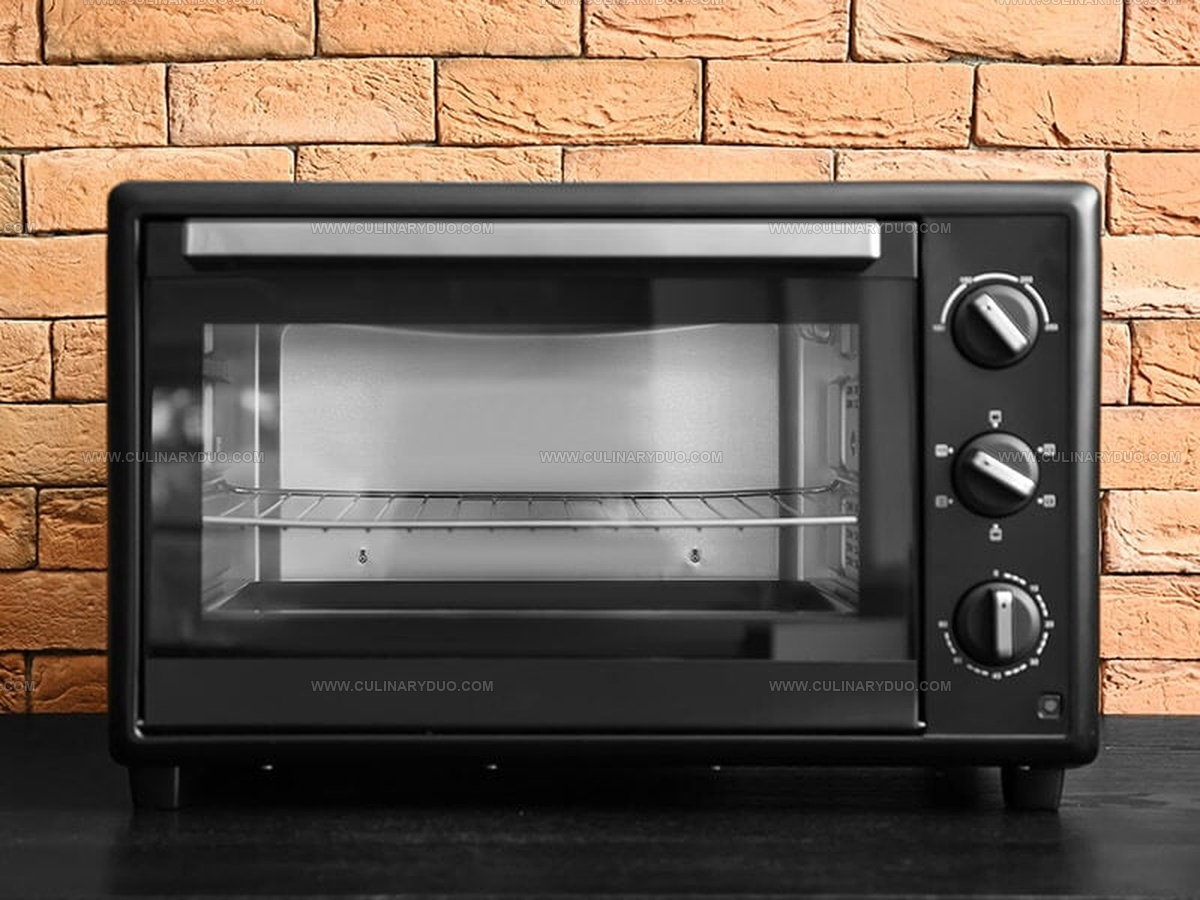
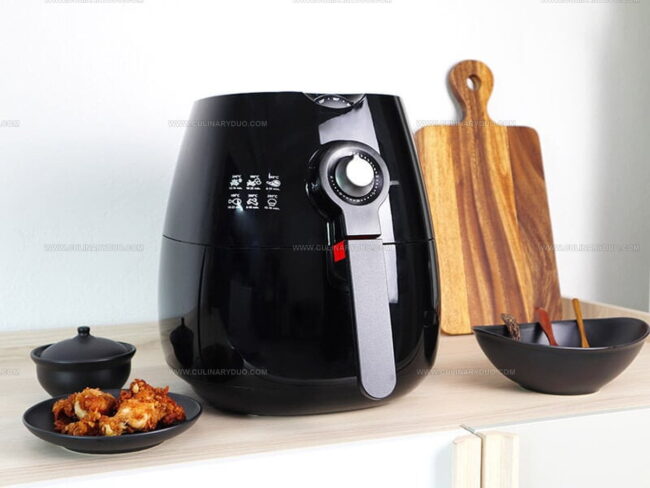
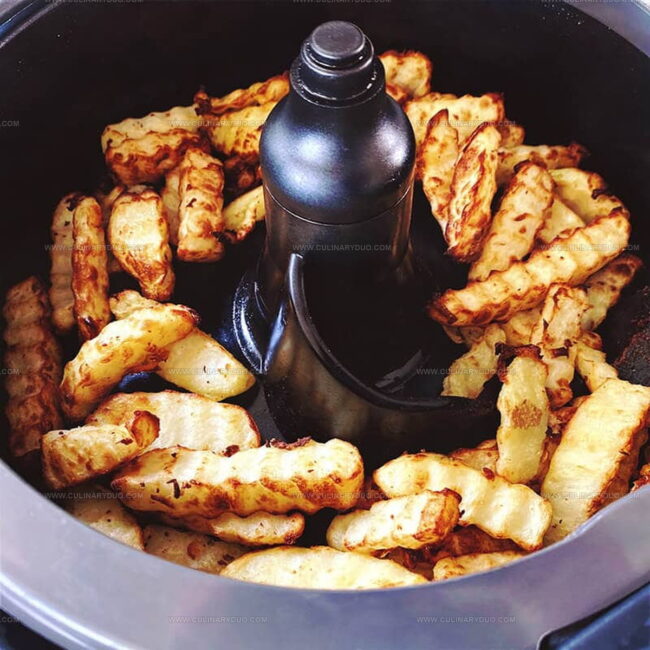
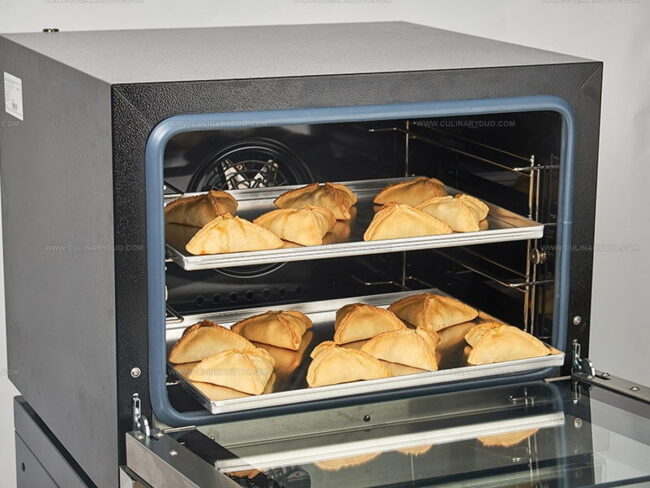
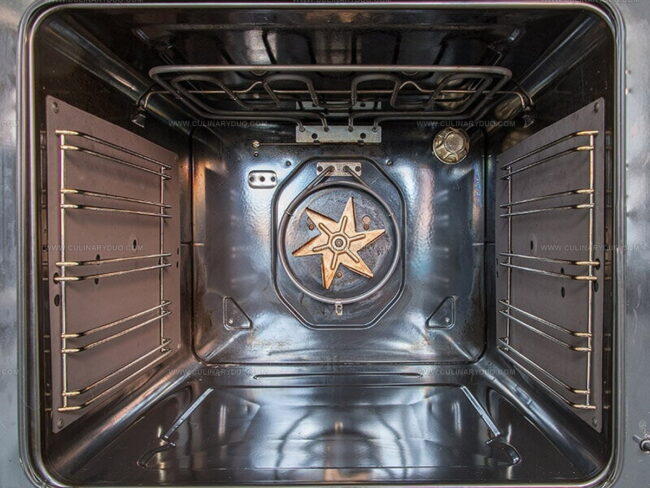
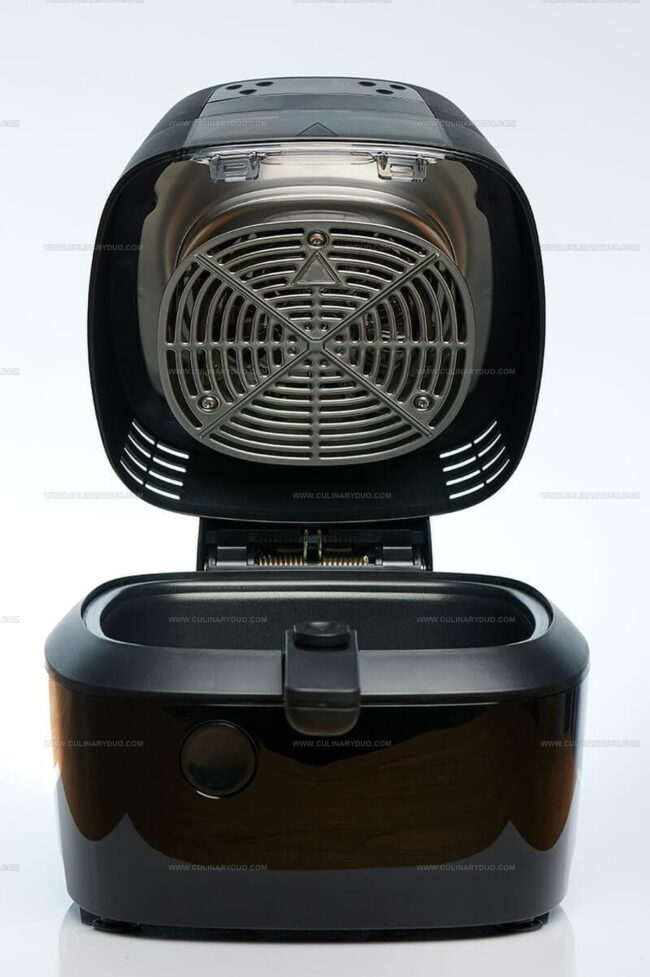
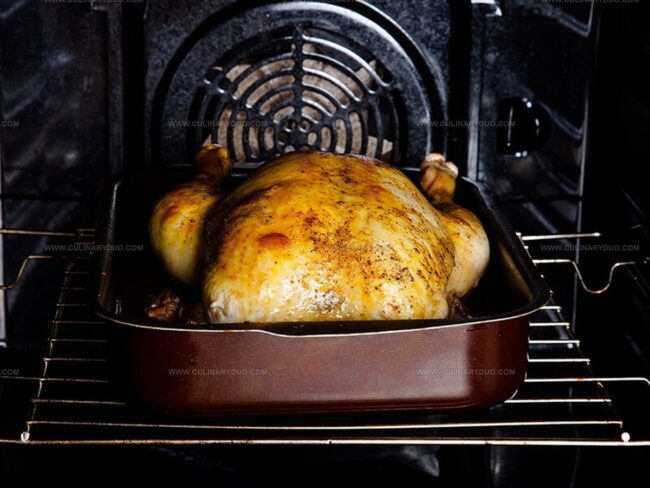
Natalie Brooks
Co-Founder & Content Strategist
Expertise
Education
eCornell
Natalie brings the vibrant, plant-powered side to Culinary Duo. After earning her Plant-Based Nutrition Certificate from eCornell, she combined her love for fresh ingredients with a passion for storytelling, aiming to make healthy cooking simple and satisfying.
Her kitchen motto: good food doesn’t need a fancy label, it just needs fresh ideas and a little creativity. Outside of writing and recipe testing, Natalie’s happiest in her garden, exploring farmers’ markets, or mixing global flavors into new kitchen experiments.